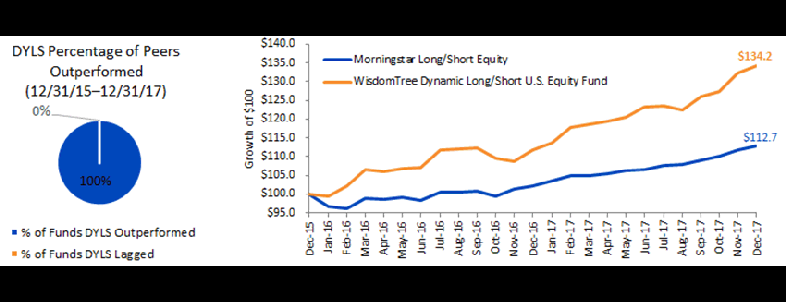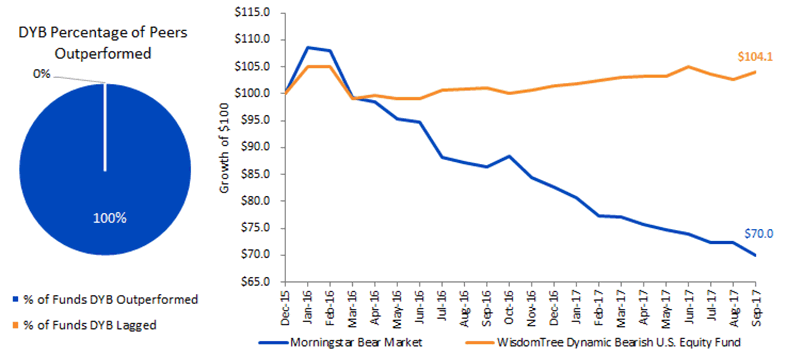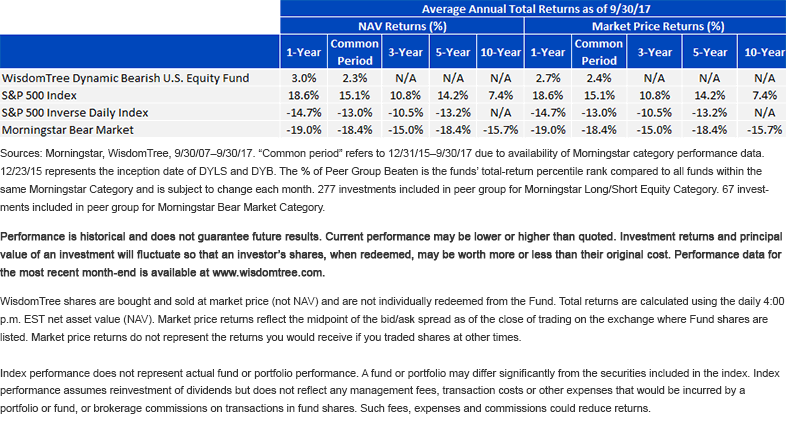Not All Alternative Strategies Are Created Equal


Josh Brown recently wrote a piece, “How to Raise 20 Billion Dollarz,” that takes on alternative investments.1 Brown documented the rise and fall of an alternative strategy fund that crushed it during the 2008–2009 down market but has been a real dog during the straight-up market we’ve experienced ever since. This alternative strategy fund saw round-trip flows of $20 billion in assets chasing its performance and then moving out as it failed to keep up with the market’s rip higher.
I write this post with some trepidation, as I will be leaning into liquid alternatives that Brown regularly mocks. My fellow bloggers are likely shaking their heads at the moment: “He’s not the wisest of fellows.” But here goes anyway.
Describing the alternative funds that rose in popularity, Brown wrote:
Black Swan funds, tactical funds, liquid alts – they were expensive, they were complicated, they were high-falutin’ in their literature – but they were seen to have worked. If you had an alts fund that was merely flat in oh-eight, you had the answer for every client question. And if you had one that actually made money in the crisis, it was as though you had stolen the Promethean fire from the gods.2
Morningstar weighed in on the challenge for alternative funds in a piece titled “Many Alternative Funds Have Disappointed Investors”.3 Morningstar cites the following problems:
High Fees. Hedge funds have historically charged 2% of assets and 20% of profits. Although that’s starting to come down, some firms crossing into the mutual fund world to launch alternative funds have kept something similar to the 2%, though you can’t also charge a percentage of profits in a mutual fund. If you’re running a strategy that generates 5% annualized, that 2% is a huge cost for shareholders to bear.
Complexity. Many alternative strategies are incredibly complex. Naturally, it’s harder for advisors and investors alike to set realistic expectations for such funds.
I wholeheartedly agree with both Brown and Morningstar. Perhaps the biggest issue with many of these liquid alternative funds is the high fees and lack of transparency in terms of a process for understanding inherent market exposures in these funds and how said exposures will change over time.
Transparency is important because if you do not know what to expect in terms of net equity exposure in a fund, it becomes hard to incorporate the funds into a portfolio, and it is a challenge for investors to calibrate expectations and tailor their desired portfolio risk levels.
Perhaps at some fee level, these alternative funds can never be considered appropriate. Yet, pushing back slightly, Ritholtz Wealth Management (RWM) also believes in tactical portfolio management—Michael Batnick, director of research at RWM, discussed in the launch of his “Animal Spirits” podcast how 20% of his personal portfolio is in the RWM tactical portfolio. That helps him sleep at night and manage drawdowns using what I imagine to be a quantitative investing process to dial down risk exposure.4 This 20% RWM tactical model seems to me like an alternative to traditional old-school, expensive alternatives.
So are all liquid alternative funds bad? I think the short answer is no. There are now solutions in the marketplace—like the RWM tactical model as a strategy—that try to address the traditional challenges of old-style alternative funds, most notably fees and transparency.
WisdomTree launched two Funds that use a factor-specific process to add value through stock selection combined with a dynamic risk model that adjusts net equity market exposure monthly using hedging instruments.
- One Fund, the WisdomTree Dynamic Long/Short U.S. Equity Fund (DYLS), is designed to have net exposure on the market that ranges from being fully invested to fully market neutral. WisdomTree expects the net beta over time will likely average somewhere between 0.6 and 0.7 in terms of how often we believe the hedges will be in place.
- The second, the WisdomTree Dynamic Bearish U.S. Equity Fund (DYB), will have net equity exposures that range from 0.25 to -1 (i.e., when it has a net 0.25 beta, it is in a portfolio that is long equities with a 75% market hedge, and when it is -1 beta, it is being fully short the market).
Fees: Both of these funds were launched in December 2015, priced at 48 basis points (bps), and are currently among the lowest priced funds in their respective fund categories.
Transparency: Every day on the website you can see your portfolio holdings, the aggregate valuations, what hedges are in place and how exposed to market risk you are. As the long portfolio or hedges on the portfolio rebalance according to our risk models, you can see updates in real time.
DYLS currently has a net beta of being fully invested (beta 1.0), while DYB has a net beta of 0.25 (invested with a 75% market hedge). We launched DYB and DYLS to be used in conjunction with each other to customize desired betas using the same factor investment process. We’ve written previously about these alternative strategies in a dynamic portfolio. If you combined these two Funds equally today, your net beta would be 0.625.
One of the reasons we did not go full market neutral in DYLS is because we believe equities generally appreciate over time and having some net beta exposure to the market could be rewarded. We are not applying leverage in these funds, and so while we believe our factor investment process will add value, we lower the risk of underperformance of a pure long/short market-neutral fund by keeping some net beta over time. We believe this makes DYLS easier to use in a long-term portfolio context without bringing down expected returns of a traditional 60/40 portfolio, as an unleveraged market-neutral fund likely would do.
On the bearish side with DYB, we know being fully short the market or bearish all the time would be a terrible long-run proposition but could have big payoffs during crisis moments like 2008. During the last five years, it has been painful to be fully bearish. DYB was established to dynamically adjust short exposure and not net decay over the long run.
Perhaps documenting the link between fees and performance, and biased by our “longer” net equity exposure in DYLS and DYB resulting from our dynamic hedging algorithm, these two Funds are currently at the top of the class in their respective Morningstar categories: the Morningstar Long/Short Equity category for DYLS and the Morningstar Bear Market category for DYB.
While these are very short-term histories and it has been a one-way march higher in equities during which our dynamic hedging algorithm has timed its market hedges almost perfectly, DYB has outperformed 100% of the 67 funds in its category since inception and year-to-date in 2017. DYLS has outperformed 99% of the funds in its category since its inception. See both charts below.
Performance and Rankings: December 31, 2015, to September 30, 2017




Click here for DYLS and here for DYB standardized performance.
This is an exciting start for these two Funds. They will have to be stress-tested during the next sell-off, of course, and the dynamic hedges will not always work. But the bigger point of this post is that I think even Josh Brown can agree that some liquid alternative funds can have a place in a portfolio to a similar degree (20% of a portfolio) that Batnick is incorporating a tactical portfolio tilt to lower his net risk exposure. At 48 basis points, these two Funds, DYLS and DYB, help address many of the challenges of liquid alternatives. Now if only DYLS will follow Brown’s prescription for raising $20 billion in a short amount of time. … I’d be very open to that possibility, and I will do my best to keep those assets once we get there.
1Source: Joshua M. Brown, “How to Raise 20 Billion Dollarz,” The Reformed Broker, 11/14/17.
2Joshua M. Brown, “How to Raise 20 Billion Dollarz,” The Reformed Broker, 11/14/17.
3Russel Kinnel, “Many Alternative Funds Have Disappointed Investors,” Morningstar, 11/14/17.
4Source: A Wealth of Common Sense, 11/15/17.Important Risks Related to this Article
There are risks associated with investing, including possible loss of principal. The Fund invests in derivatives, including as a substitute to gain short exposure to equity securities. Derivative investments can be volatile, and these investments may be less liquid than other securities, and more sensitive to the effects of varied economic conditions. Derivatives used by the Fund to offset its exposure to market volatility may not perform as intended. The Fund may engage in “short sale” transactions and will lose value if the security or instrument that is the subject of a short sale increases in value. A Fund that has exposure to one or more sectors may increase the Fund’s vulnerability to any single economic or regulatory development. This may result in greater share price volatility. The composition of the Index is heavily dependent on quantitative models and data from one or more third parties and the Index may not perform as intended. The Fund invests in the securities included in, or representative of, its Index regardless of their investment merit and the Fund does not attempt to outperform its Index or take defensive positions in declining markets. Please read each Fund’s prospectus for specific details regarding each Fund’s risk profile.
Jeremy Schwartz has served as our Global Chief Investment Officer since November 2021 and leads WisdomTree’s investment strategy team in the construction of WisdomTree’s equity Indexes, quantitative active strategies and multi-asset Model Portfolios. Jeremy joined WisdomTree in May 2005 as a Senior Analyst, adding Deputy Director of Research to his responsibilities in February 2007. He served as Director of Research from October 2008 to October 2018 and as Global Head of Research from November 2018 to November 2021. Before joining WisdomTree, he was a head research assistant for Professor Jeremy Siegel and, in 2022, became his co-author on the sixth edition of the book Stocks for the Long Run. Jeremy is also co-author of the Financial Analysts Journal paper “What Happened to the Original Stocks in the S&P 500?” He received his B.S. in economics from The Wharton School of the University of Pennsylvania and hosts the Wharton Business Radio program Behind the Markets on SiriusXM 132. Jeremy is a member of the CFA Society of Philadelphia.

